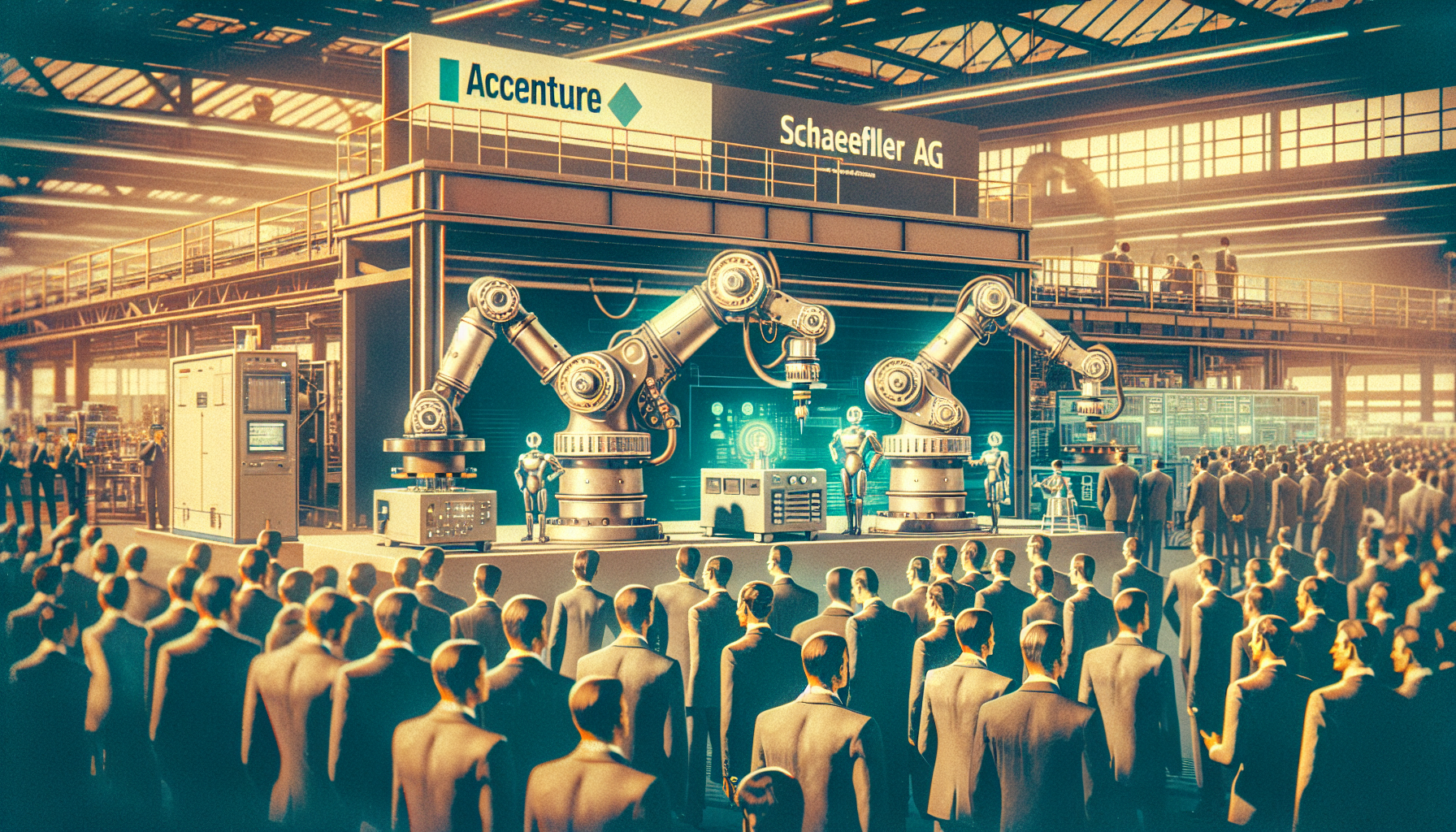At the Hannover Messe 2025, something extraordinary unfolded. Accenture and Schaeffler AG, two leaders in innovation, revealed a new wave of industrial robots. These robots, powered by Nvidia’s advanced AI computing and Microsoft’s powerful cloud, set a new standard for what factories can achieve. This collaboration marks a turning point for manufacturing—where intelligent machines and human insight work hand in hand.
Uniting Forces for Smart Factories
Accenture and Schaeffler’s partnership brings together the best minds and technology from Nvidia and Microsoft. Their vision is clear: smarter, safer, and more flexible factories. From tasks that need a human touch to fully automated processes, they have created a system that adapts to every need. At the fair, they showed how a blend of AI, robotics, and cloud computing can reshape the very heart of industrial work.
Digital Twins: The Factory’s Virtual Mirror
One of the most impressive innovations is the use of “digital twins.” By using Nvidia’s Omniverse platform, the team built exact digital copies of Schaeffler’s factories. These virtual twins let engineers plan, test, and refine every detail—from the layout of machines to the movement of robots—before making any physical changes. It means new robots can be integrated smoothly and potential problems are solved before they reach the factory floor, saving valuable time and resources.
The Rise of Intelligent Robots
This initiative also brought several advanced robots to center stage:
- Autonomous Mobile Robots (AMRs): These agile machines move materials across the factory, handling repetitive tasks quickly and reliably. They make daily operations more consistent and efficient.
- Collaborative Mobile Manipulators (“Cobots”): Schaeffler showcased their robot “EMMA,” designed to operate safely alongside human workers. EMMA assists with complex processes, bridging the gap between people and machines.
- Humanoid Robots: Robots such as Digit by Agility Robotics and Phoenix by Sanctuary AI performed duties ranging from assembling kits to managing inventories. These humanoid robots use AI to observe, learn, and perform new tasks without requiring reprogramming, adapting gracefully to the changing needs of the factory environment.
Cloud and AI: The Engine Behind Smart Operations
Microsoft’s cloud solutions—like Microsoft Fabric—and new advances in generative AI power the brains of these robots. These tools deliver constant data analysis and real-time insights. This means managers and robots alike can make smart decisions quickly, adjusting operations on the fly and ensuring every shift runs smoothly. AI can even suggest process improvements, helping teams keep pace with market demands.
Shaping the Future of Manufacturing
Accenture’s recent research reveals a powerful trend: factory leaders are rapidly embracing AI-driven robots. Nearly half expect robots—especially AMRs and humanoids—to become standard in assembly lines soon. The investments that Accenture, Schaeffler, Nvidia, and Microsoft are making aren’t just about keeping up; they’re about setting the pace for the world.
Andreas Schick, Chief Operating Officer at Schaeffler, captured the moment best. He spoke of a future in which digital twins, AI-powered robots, and cutting-edge software come together, helping factories around the world achieve operational excellence and redefining what’s possible in manufacturing.
The Dawn of a New Era
What Accenture and Schaeffler revealed at Hannover Messe 2025 is more than an impressive showcase—it’s the beginning of a new chapter in industrial automation. By fusing simulation, robotics, AI, and cloud computing, they have created a platform for factories to run smarter, safer, and more efficiently than ever before.
This breakthrough paves the way for factories where intelligent robots work alongside people, tackling complex jobs and freeing humans to focus on areas that require creativity and expertise. The result: manufacturing that is faster, more flexible, and prepared to meet the challenges of tomorrow.

Leave a Reply